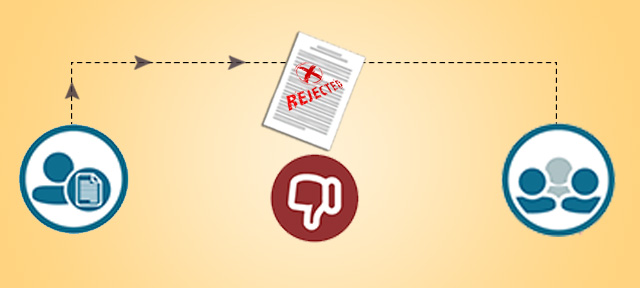After a paper is submitted to a journal, it generally goes in for peer review analysis. But there are instances when the paper is rejected even before it reaches the peer review stage. This happens because the paper does not conform to the scope or the technical specifications of the concerned journal, and is therefore unilaterally rejected by the editor. In most high impact factor journals, about 5% of the submitted papers are accepted. It is very important to understand and analyse the possible reasons for rejection, so as to avoid any such issues in the future.

Content of article not within scope of journal
Every journal specifies its scope, and expects that papers submitted should fall under its purview. Journal editors are very strict about this particular aspect. They could reject a manuscript on the basis of non-compliance of manuscript to the guidelines.
Non-conformity with journal style, format, and guidelines
Each journal has its unique style of presentation and writing, which is specified in the journal guidelines. To maintain uniformity it is essential that all manuscripts must comply with the journal guidelines.
Duplication of existing work or plagiarism
Plagiarism is considered to be a serious offence, punishable under law. Journals ignore minimal amount of duplication but papers which are almost completely plagiarised are subjected to outright rejection.
Results are not novel or significant
When journals notice that the paper submitted presents a study that is just an extension to a research previously conducted by the same or different authors, they reject it on account of the paper not being novel. Journals are more enthusiastic to bring to the fore new research and developments carried out within their scope of interest.
Beyond the purview of target audience
Before submitting a paper to a journal, it is very important for the researcher to have a clear idea about its target audience. This plays a crucial factor in deciding whether the paper will be accepted or rejected.
Article is too specialised or general
Some journals target a broad audience, composed of people from various walks of life. Whereas, other journals target a very specific group of people, say for example researchers and academicians. Therefore, prior to writing a paper it is essential to know the journal’s target group, and subsequently decide whether to write a specialised or general paper.
Poor quality of research
If the analysis conducted in the study is flawed or inadequate, or if the conclusion is not corroborated by what has been mentioned in the rest of the paper, then there are high chances of the manuscript being rejected.
Results are speculative
Papers without any substantial findings are bound to get rejected. So it is advisable that the authors present notable findings, which help in the advancement of the field of study.
Lack of clarity and/or cohesiveness
In some papers, the poor quality of English used leads to comprehension problems. Other reasons for rejection include low resolution figures, archaic references, and lack of cohesion in the paper.
Resource Crunch
Sometimes the publication process is delayed because journals receive far more papers than they can publish at a given point in time.
There is a need to optimise the resources available to a journal, in terms of the time allotted to editors and reviewers. Overburdening them only leads to a drop in quality in the process of peer review, which in turn could be another reason for rejection.
After investing significant effort in research and documentation, rejection can be disheartening. But instead of feeling demoralised, authors should consider reworking on the paper with the help of reviewer suggestions, thereby improving its content, and resubmitting it. Authors could also submit their paper to another journal, provided a reviewer suggestion explicitly states so.

